As some of you may know, back in March I traded my 2012 GT500 in on a 2014 GT500. I’ve now had the car for a little over two months, and put about 4,000 miles on it (including a trip to the track), so I wanted to give the car a proper review. Additionally, I think a comparison to my departed 2012 is in order. But first, let me talk a little about why I bought this thing, despite it not being the brightest move, financially…
Background
Back when I bought the 2012 GT500, I mentioned all of my reasons for buying a ‘12 model, even thought the 662 HP, 203-MPH ‘13 model had been announced. I said (and I quote…err, me):
I also reasoned that for the 10K extra Ford is charging for the 2013, I should be able to get to 2012 into the 750-800 HP range without much issue.
This is just as valid now as it was then. The problem, and one I wasn’t thinking of at the time, is that the new model has MUCH more to offer than the 120 or so extra HP. I’ll get to that in a minute, but despite the temptation to upgrade, I was still plenty happy with my ‘12. Until I started looking at ‘14’s.
It’s my wife’s fault, really.
See, what happened is that her long-suffering 2006 GTO, with 150,000 miles on the odometer, was working on lunching the T56 transmission that had selflessly taken my powershifts for far too many miles. So, the decision she had to make was between fixing the transmission and eventually fixing all of the other little nagging issues with the car, or buying a low-mileage used car.
Since the car was paid off, throwing a few thousand dollars into it wasn’t as bad of an idea as it initially seems, and while it would have nickeled and dimed us to death for a while, she really loved the car, so it was a very hard choice for her. In the end, she decided to at least look for something else and see if she fell in love with anything.
We went out and test drove a couple of WRX STI’s, a Challenger R/T, and an Evo, but none of these really grabbed her. As we were leaving the lot after testing the second WRX, she saw a new ‘13 Mustang GT on the lot across the street with a sticker price that was less than the used WRX we had just tested. Off she went, and I faithfully followed.
Truthfully, a Mustang is the last thing I wanted her in. I already had one, and I would have preferred a little variety. But it was a smoking deal ($26K for a new Mustang GT is a steal), and I couldn’t fault her taste.
To her credit, she didn’t test drive it, but she cranked it, and the sound of the 5.0 hooked her pretty good. While she was looking at the car, I happened to notice a Black ‘14 GT500 in the showroom, and my mind started churning.
“I wonder if we could get a better deal on two new cars than one?”
What started as a ploy to get an even better deal turned into a bit of an obsession once I realized that, with current interest rates, I could end up paying the same payment for an upgraded car as I was currently paying for my old one.
Long story short, a month or so later, we had two new ‘14 Mustangs in the driveway. A Deep Impact Blue GT for her, and a Black GT500 for me.
So it’s her fault. Kind of.
Not really.
My Car
The new car was optioned slightly different than my old one. I was actually searching for a ‘stripper’ (no, not that kind), a car with as few options as possible. Those are very rare in the GT500 world, but what I got is pretty close:
- Black on Black with Tape Stripe Delete
- 820A Equipment Group (Base, not SVT Performance Package)
- Navigation
- Shaker Pro audio system (a sub in the trunk, basically)
It also came with the Shelby fitted car cover (just like my last one), which I promptly sold for $275 (just like my last one). All car covers are good at (at least on a car that is driven a lot) is scratching your paint.
Anyhow, here are some pictures of the car the day of delivery (all photos courtesy of Lambert Hill Photography):
I had the wheels and tires (Steeda Spyders and Toyo R888s) from my 2012 GT500 swapped onto the new car before it even left the dealership. I remember what a white-knuckled ride 550 HP on Goodyear Eagles was, I had no desire to experience it with 662 HP. Other than that and my trusty Valentine 1, however, it’s stock.
Contrasting the ‘12 and ‘14 Models
I’m not going to go into great detail on a formal review of most of the car, as I did all that with my 2012, and for as much that is different, a lot of the stuff is the same. Instead, I want to hit on the differences.
First and foremost is obviously performance. In addition to bumping the HP up to 662 and removing the governor (the top speed is drag limited), Ford made a lot of other changes to both improve drivability and overall capability of the car.
For the engine, displacement was bumped to 5.8 (overbored from 5.4), a 2.3 L TVS supercharger was slapped on it (up from the Eaton M122), boost was cranked to 15 PSI, and a whole lot of parts were beefed up (a great technical write-up of all of the changes is here).
Gearing-wise, Ford reduced the final drive ratio to 3.31 (from 3.73 in my 2012) and also dropped the first gear ratio in the TR6060 to 2.66 (from 2.97). These changes are immediately evident in that the new car is no harder to get off the line than the old one, but has much longer legs. For example, first is good for 60 MPH, and gear changes generally come in 30 MPH increments from there, so winding out 3rd actually puts you at around 130 MPH with three gears left.
One additional change in the driveline is the shifter. Ford slightly increased the throws in the ‘13/’14 shifter to help combat the second gear grinding that people (including me) have experienced. Apparently, this means it has something to do with the speed that shifts are made, though Ford claims it’s a case of foot beating hand. I’m not sure I agree with that, but some folks are saying upgrading the shifter bushings resolves the problem.
Regardless, the changes have reduced the occurrence of the grind, at least in my car, quite a lot, though it still will occur if I’m not diligent with slowing down my 2nd gear shifts.
One unwelcome change on this end is the addition of a clutch assist spring on the clutch pedal. This spring is to help hold the clutch in when in stop and go traffic, as it is a little heavy. However, the spring only engages at about 60% of pedal travel, and it changes the resistance felt at this point. What this does is makes it very difficult to judge where the engagement point of the clutch is, since the pressure required is not linear, and it’s generally infuriating.
Luckily, you can remove the spring with a pair of vice grips, 20 minutes, and a few well-placed swear words.
Like the engine, Ford beefed up a number of driveline parts (including the clutch) to help deal with the increased power (again, a full technical write-up is here).
Ford also added some electronical do-dads to help performance. For starters, the ECU has a neat over-rev feature that allows you to go up to 7000 RPM (up from 6250) for 8 seconds once the engine has reached safe operating temperature. In practice, at least for the driving I do, this means the redline is effectively 7000 RPM, since I can’t forsee a case where I would have the engine north of 6250 for over 8 seconds.
Next, they have added a bunch of track apps, including what is effectively a built in two-step for drag launches in the form of a feature called launch control. Basically, launch control is a feature where you define a launch RPM, engage the control, pull up to the line, stop the car, floor the pedal, and launch control keeps the RPMs steady at your pre-defined setting. So you can set the LC RPM to 3500, stop on the line, plant the gas, and not worry about the revs. LC will hold a steady 3500 until you drop the clutch, at which point all hell will break loose.
There are other track apps, including ones that will display your 0-60 times, but launch control is the one that really stands out.
Now, at this point, I’ve talked a lot about the changes to the car, but haven’t really spoken much about what it feels like. Honestly, it doesn’t feel much different until you get to 100 MPH+ speeds. From a stop, it feels like it pulls about the same as before, but objects in the mirrors get smaller much faster. With good tires, the only really scary part is when you realize how fast you are going. 0 – 150 is surreal, mostly because it’s not until you are shifting into 5th that you realize you are well into go-to-jail speeds. Probably the best way to conceptualize this is to watch this video:
This is my car on my very first track pass. I’m a long way from getting the best out of this car, but even with my poor driving, 125 MPH took 11 seconds from a dead stop. When I shifted into second, I was already going faster than 60 MPH.
Wind out one more gear, and you are over 150.
With decent tires, the car is very controllable and almost sedate, even at speed. With the stock tires, however, it’s terrifying. The best review I’ve ever seen of the stock car is here, and these two paragraphs are particularly telling:
The 5.8 liter V8’s good for more than just scaring wildlife, though. Be warned when you tap that keg for the first time, because this motor is under serious pressure, and it will bite you if you don’t know what you’re doing. The power is…obscene. On so many levels. The rear end broke loose at 60 mph in third gear…on a dry highway. It doesn’t do burnouts, it commits acts of incendiary warfare.
The GT500 comes with launch control – accessed via a dedicated button – but that just seems so ordinary in this day and age. Better to downshift to 2nd at 40 mph, nail the gas, and then look down five or six seconds later to see the car passing 90 at redline. There is no comprehending the acceleration of the GT500 until you experience it.Ever see that clip from Mythbusters where they fire a rocket sled at a compact car? It’s like that.
To some degree I actually miss the car scaring the shit out of me whenever I stomp the go pedal, but I can’t go back. With the stock tires, you never get to use anywhere close to your 662 HP. Mashing the pedal just melts rubber and wiggles the rear. Better to be sedate and fast than exciting and slow.
Aside from performance, the only other things to really mention regarding the differences relate to comfort features that are different between the two cars, starting with seating. In my ‘12, I had the optional manual Recaro racing seats. Personally, I really like the Recaros. I found them comfortable and very form-fitting, and when driving hard in curves, they were worth their weight in gold. However, in this car, I specifically looked for one without the Recaros, because those same seats, due to their lack of an adjustable headrest, caused my wife significant back pain. The base seats work much better for her.
My advice for anyone looking to buy one of these cars is to sit in one before you commit to a seat choice, as it’s more individual than you might think. That being said, if you are going to track the car (roadcourse, auto-x, etc.), the Recaros are almost mandatory. I can’t imagine trying to drive this car aggressively in curves with the base seats.
As for the other major difference, the Shaker Pro sub, I mostly like it. It’s certainly not worth the $1,295 Ford is charging for it (you can buy a hell of an amp and sub for that kind of scratch), but as long as you turn the bass on the stereo up by two or three notches, you definitely know it’s there. I wish it had an adjustable gain control, but it’s workable as-is. While I wouldn’t recommend anyone order that option simply due to the premium Ford is charging for it, I’m not in any hurry to replace it.
There are a number of other fairly minor differences (mostly cosmetic) between the ‘12 and the ‘14, but honestly, the biggest draw of the ‘14 is the performance. The ‘Trinity’ GT500’s (‘13 / ‘14) represent not only the most powerful Mustangs ever built, but also the most powerful production V8 in the world. They are also the only 200+ MPH Mustangs ever made. If that’s not enough for you, then cosmetic changes aren’t going to do it.
You know, as a kid, I always wanted a 200 MPH car. I just never imagined that when I got it, it would be a Mustang.

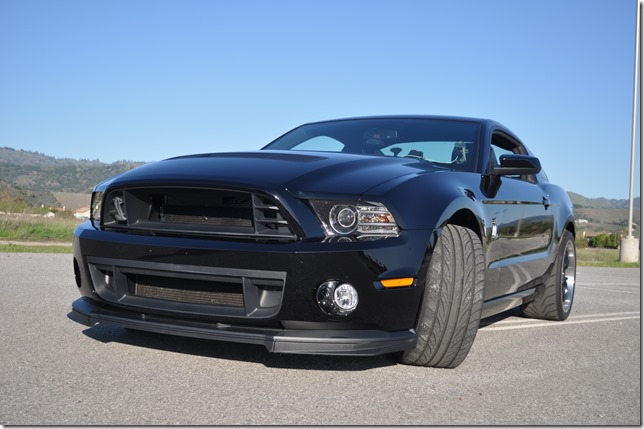

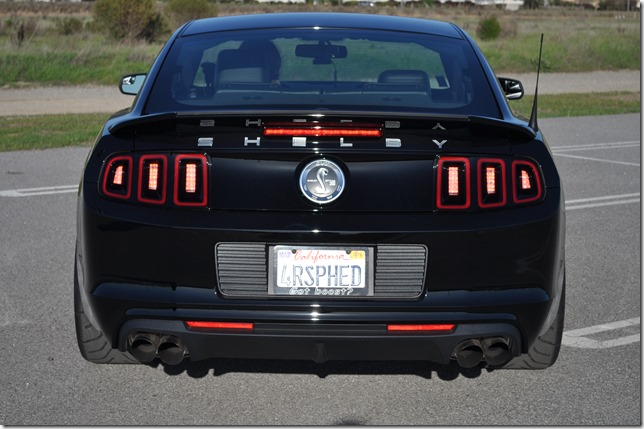
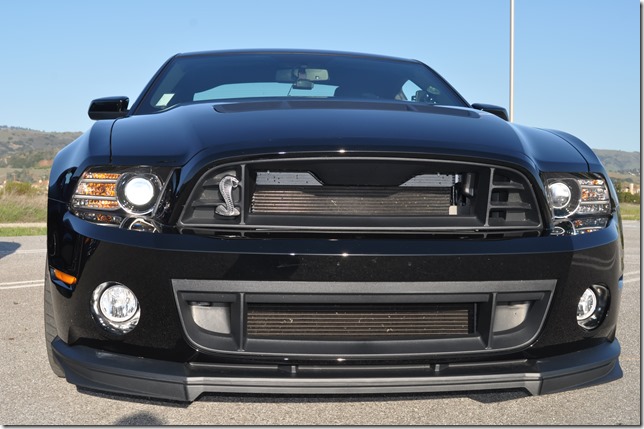
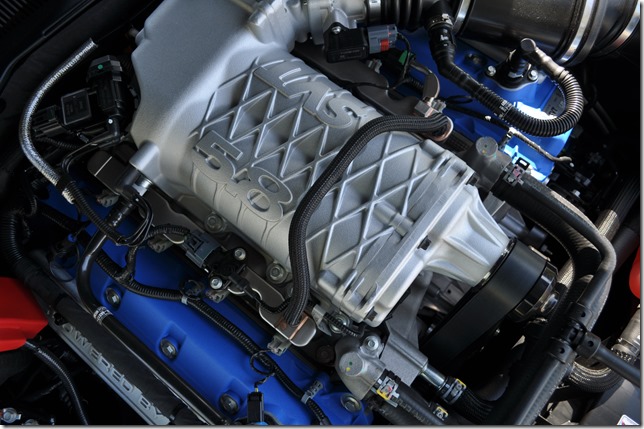
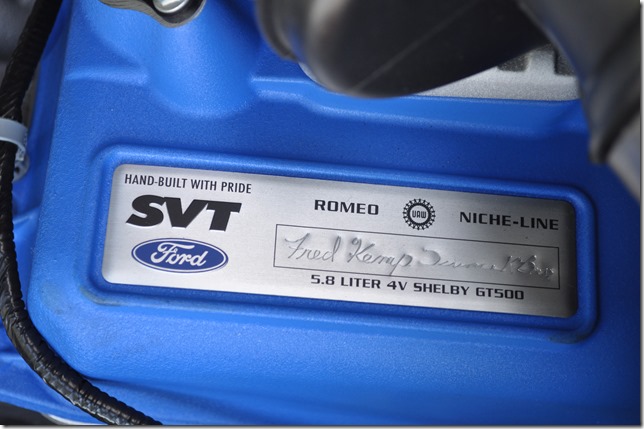
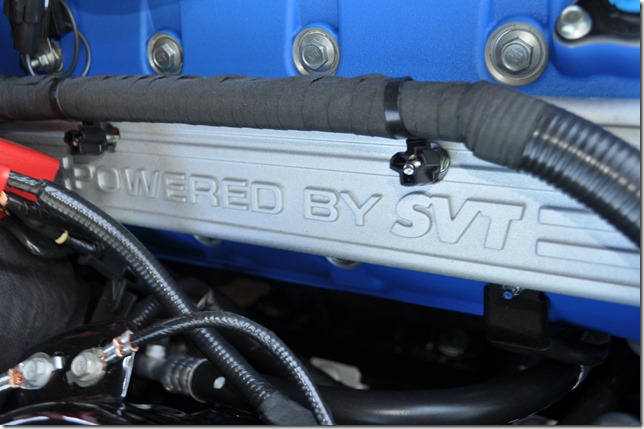
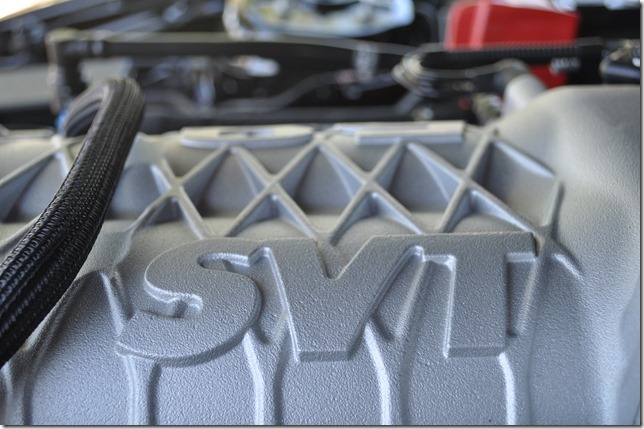



#1 by Jeff on July 4, 2014 - 9:30 am
excellent review, i have a 2013 Challenger r/t
I raced one of those at the track here and my 13.6 time was destryed by the mustanges 11.7 time. I have had a couple of mustangs and loved them, my last one was an 02. I thought much like you, im not going to pa an extra 10k for the bigger srt8. So i put headers, exhaust and a cold air intake on it. I also changed out the all the read trailing arms and control arms and replaced the cradle and toe rod bushings, then took it back out to the track. I also run the nitto 555r in the back. My first 2 races were against 2 different srt8 and i won both races. I will add some other stuff like a supercharger, im still comtemplating a stroker kit from arington. Great job on the Mustang im a bit jealous….but i do love my classic looking challenger.
#2 by Mike on July 22, 2017 - 5:48 pm
Nice